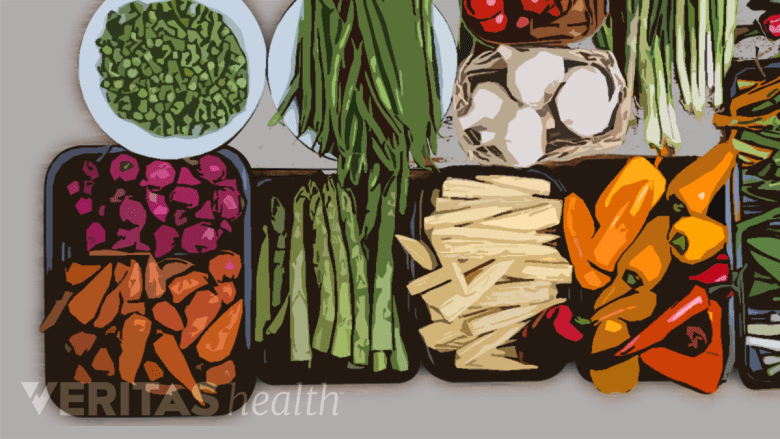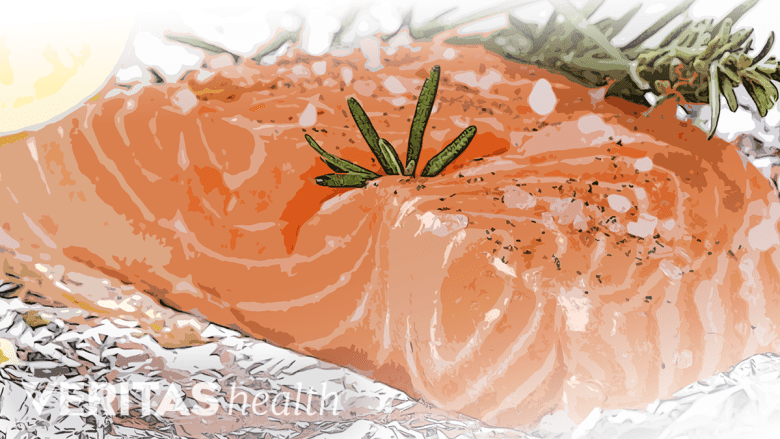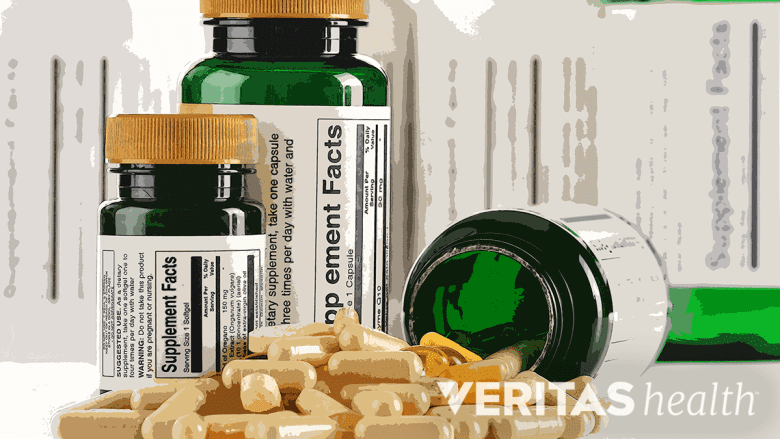Calcium is found in a variety of foods and beverages, and dairy is the most common source of dietary calcium. Cruciferous vegetables, such as broccoli and kale rank second in providing high levels of calcium.
The body cannot produce calcium, so this important mineral must be taken through the diet to maintain strong bones and meet the body’s metabolic needs.
When children consume calcium-rich foods in their childhood, this mineral gets built up and stored in their bones for future use in adulthood. Food groups rich in calcium are discussed below. Calcium may also be taken as a dietary supplement.
In This Article:
- Calcium Requirements for Kids' Growing Bones
- Calcium-Rich Foods for Kids: A Complete Guide
- How to Increase Bone Density
How Much Calcium Is in Dairy: A Guide for Parents

High amounts of calcium can be obtained from dairy.
Dairy is a rich source of calcium. In the standard American diet, 60% to 70% of dietary calcium is obtained through dairy.1Burckhardt P. Calcium revisited, part III: effect of dietary calcium on BMD and fracture risk. Bonekey Rep. 2015;4:708. Published 2015 Aug 5. Available from https://www.ncbi.nlm.nih.gov/pmc/articles/PMC4549924/
Dairy foods rich in calcium are milk, yogurt, cheese, cottage cheese, and ice cream. The calcium obtained from dairy is high, and a serving of milk, cheese, and yogurt would each yield almost the same amount of absorbable calcium.2Rozenberg S, Body JJ, Bruyère O, et al. Effects of Dairy Products Consumption on Health: Benefits and Beliefs--A Commentary from the Belgian Bone Club and the European Society for Clinical and Economic Aspects of Osteoporosis, Osteoarthritis and Musculoskeletal Diseases. Calcif Tissue Int. 2016;98(1):1-17. doi:10.1007/s00223-015-0062-x
Comparison of the amount of calcium in common dairy foods
| Food | Standard Serving Size (g) | Calcium content per serving (mg) |
|---|---|---|
| Milk | 240 | 300 |
| Yogurt | 240 | 300 |
| Cheddar Cheese | 42 | 303 |
Consuming dairy has a proven benefit on kids’ bones
In children, consuming dairy has a positive effect on bones. A large-scale study that included almost 4000 participants showed high bone mineral content (BMC) in those who consumed large quantities of dairy products alongside other dietary sources of calcium.1Burckhardt P. Calcium revisited, part III: effect of dietary calcium on BMD and fracture risk. Bonekey Rep. 2015;4:708. Published 2015 Aug 5. Available from https://www.ncbi.nlm.nih.gov/pmc/articles/PMC4549924/,3Huncharek M, Muscat J, Kupelnick B. Impact of dairy products and dietary calcium on bone-mineral content in children: Results of a meta-analysis. Bone. 2008;43(2):312-321. doi:10.1016/j.bone.2008.02.022 Research also suggests that the total body calcium of an infant is increases when the mother consumes calcium-rich foods.1Burckhardt P. Calcium revisited, part III: effect of dietary calcium on BMD and fracture risk. Bonekey Rep. 2015;4:708. Published 2015 Aug 5. Available from https://www.ncbi.nlm.nih.gov/pmc/articles/PMC4549924/,4Chan GM, McElligott K, McNaught T, Gill G. Effects of dietary calcium intervention on adolescent mothers and newborns: a randomized controlled trial. Obstetrics & Gynecology. 2006;108(3 Part 1):565–571. doi:10.1097/01.AOG.0000231721.42823.9e
Calcium-Rich Vegetables for Children

Some vegetables can be good sources of calcium.
Vegetables rich in calcium are kale, broccoli, bok choy, and watercress. Although these vegetables contain high amounts of calcium, several servings of these veggies would need to be incorporated into the diet to achieve the same amount of calcium obtained from a single serving of milk.1Burckhardt P. Calcium revisited, part III: effect of dietary calcium on BMD and fracture risk. Bonekey Rep. 2015;4:708. Published 2015 Aug 5. Available from https://www.ncbi.nlm.nih.gov/pmc/articles/PMC4549924/,2Rozenberg S, Body JJ, Bruyère O, et al. Effects of Dairy Products Consumption on Health: Benefits and Beliefs--A Commentary from the Belgian Bone Club and the European Society for Clinical and Economic Aspects of Osteoporosis, Osteoarthritis and Musculoskeletal Diseases. Calcif Tissue Int. 2016;98(1):1-17. doi:10.1007/s00223-015-0062-x,5Cormick G, Belizán JM. Calcium Intake and Health. Nutrients. 2019;11(7):1606. Published 2019 Jul 15. doi:10.3390/nu11071606
Comparison of the amount of calcium in common vegetables2Rozenberg S, Body JJ, Bruyère O, et al. Effects of Dairy Products Consumption on Health: Benefits and Beliefs--A Commentary from the Belgian Bone Club and the European Society for Clinical and Economic Aspects of Osteoporosis, Osteoarthritis and Musculoskeletal Diseases. Calcif Tissue Int. 2016;98(1):1-17. doi:10.1007/s00223-015-0062-x
| Food | Standard Serving Size (g) | Calcium content per serving (mg) | Calcium absorbed per serving (mg) |
|---|---|---|---|
| Bok Choy | 85 | 79 | 43 |
| Kale | 85 | 61 | 30 |
| Broccoli | 71 | 35 | 21 |
| Spinach | 85 | 115 | 6 |
| Rhubarb | 120 | 174 | 10 |
Note that some veggies restrict calcium absorption
The presence of compounds such as oxalic acid in some vegetables can reduce the overall absorbable calcium from the food. Examples of oxalic acid-containing veggies include spinach, collard greens, sweet potatoes, and rhubarb.
It is important to note that these veggies are high in other nutrients and must be consumed as a part of an overall healthy diet that also incorporates calcium-rich foods.1Burckhardt P. Calcium revisited, part III: effect of dietary calcium on BMD and fracture risk. Bonekey Rep. 2015;4:708. Published 2015 Aug 5. Available from https://www.ncbi.nlm.nih.gov/pmc/articles/PMC4549924/,2Rozenberg S, Body JJ, Bruyère O, et al. Effects of Dairy Products Consumption on Health: Benefits and Beliefs--A Commentary from the Belgian Bone Club and the European Society for Clinical and Economic Aspects of Osteoporosis, Osteoarthritis and Musculoskeletal Diseases. Calcif Tissue Int. 2016;98(1):1-17. doi:10.1007/s00223-015-0062-x
The Role of Grains, Nuts, and Soy in Meeting Kids’ Daily Calcium Requirements

Incorporating nuts in the diet can be a good way to consume calcium.
Similar to oxalic acid, the presence of phytic acid compounds in some of these foods may also lower the amount of calcium that the body can absorb.
Calcium-Rich Seafood for Children

Salmon is a good source of calcium and vitamin D.
Seafood, especially canned fish, such as canned sardines and salmon, is high in calcium. Other sources include crab and scallops.
Seafood also contains vitamin D, an essential hormone that regulates the absorption of calcium.
Calcium-Rich Foods for Kids with Food Allergies and Restrictive Diets: A Complete Guide

Kids who have restrictive diets or food allergies may need calcium supplements.
Many kids and/or families follow vegan, vegetarian, or other types of restrictive diets. Kids may also be picky eaters and not accept all types of foods/food groups. Additionally, food allergies and intolerance may prevent some kids from being able to consume specific types of food.
Here are a few options and ways to include calcium in such situations:
- Eat calcium-fortified foods. Several food products can be fortified with calcium. Common examples include flour, bread, orange juice, soft drinks, breakfast cereals, snacks, rice and rice products, and soy milk.1Burckhardt P. Calcium revisited, part III: effect of dietary calcium on BMD and fracture risk. Bonekey Rep. 2015;4:708. Published 2015 Aug 5. Available from https://www.ncbi.nlm.nih.gov/pmc/articles/PMC4549924/
- Switch to yogurt or non-dairy foods in case of lactose intolerance. Yogurt contains bacteria that can break down lactose, is a rich source of calcium, and can be a healthy alternative to milk for individuals who are lactose intolerant and cannot digest lactose in milk.1Burckhardt P. Calcium revisited, part III: effect of dietary calcium on BMD and fracture risk. Bonekey Rep. 2015;4:708. Published 2015 Aug 5. Available from https://www.ncbi.nlm.nih.gov/pmc/articles/PMC4549924/
- Canned fish with bones (like sardines and salmon), leafy greens, and calcium-fortified orange juice are non-dairy options for kids who don’t like to drink milk or cannot digest milk.
- Try mineral water with added calcium. Calcium obtained from mineral water is comparable to calcium obtained from milk, which makes mineral water a good alternative for those who prefer non-dairy calcium-rich drinks.1Burckhardt P. Calcium revisited, part III: effect of dietary calcium on BMD and fracture risk. Bonekey Rep. 2015;4:708. Published 2015 Aug 5. Available from https://www.ncbi.nlm.nih.gov/pmc/articles/PMC4549924/
- Choose alternate food groups in case of food allergies. Kids who are allergic to nuts and/or seafood can focus on eating more dairy, fortified cereals, corn tortillas, and/or bread made with whole grains to obtain calcium.
- Consider taking a calcium supplement. Calcium supplements may be considered for those kids who do not get sufficient calcium through their diet and may be at high risk for bone-related conditions. Calcium supplements are available in the form of chewable tablets and gummies.
It is important to discuss the use of any type of dietary supplement with the child’s pediatrician. Calcium supplements may interact with other medications and if the dosage is not monitored, may result in excessive calcium or toxicity, which can cause other metabolic problems.
If parents and caregivers are concerned about meeting the dietary calcium requirements for their kids, they can consider consulting a pediatric nutritionist. A pediatric nutritionist has special training in the dietary needs of growing children and teens and can help families develop healthy dietary habits that include optimal amounts of calcium and other nutrients needed for proper bone growth and development.
- 1 Burckhardt P. Calcium revisited, part III: effect of dietary calcium on BMD and fracture risk. Bonekey Rep. 2015;4:708. Published 2015 Aug 5. Available from https://www.ncbi.nlm.nih.gov/pmc/articles/PMC4549924/
- 2 Rozenberg S, Body JJ, Bruyère O, et al. Effects of Dairy Products Consumption on Health: Benefits and Beliefs--A Commentary from the Belgian Bone Club and the European Society for Clinical and Economic Aspects of Osteoporosis, Osteoarthritis and Musculoskeletal Diseases. Calcif Tissue Int. 2016;98(1):1-17. doi:10.1007/s00223-015-0062-x
- 3 Huncharek M, Muscat J, Kupelnick B. Impact of dairy products and dietary calcium on bone-mineral content in children: Results of a meta-analysis. Bone. 2008;43(2):312-321. doi:10.1016/j.bone.2008.02.022
- 4 Chan GM, McElligott K, McNaught T, Gill G. Effects of dietary calcium intervention on adolescent mothers and newborns: a randomized controlled trial. Obstetrics & Gynecology. 2006;108(3 Part 1):565–571. doi:10.1097/01.AOG.0000231721.42823.9e
- 5 Cormick G, Belizán JM. Calcium Intake and Health. Nutrients. 2019;11(7):1606. Published 2019 Jul 15. doi:10.3390/nu11071606

